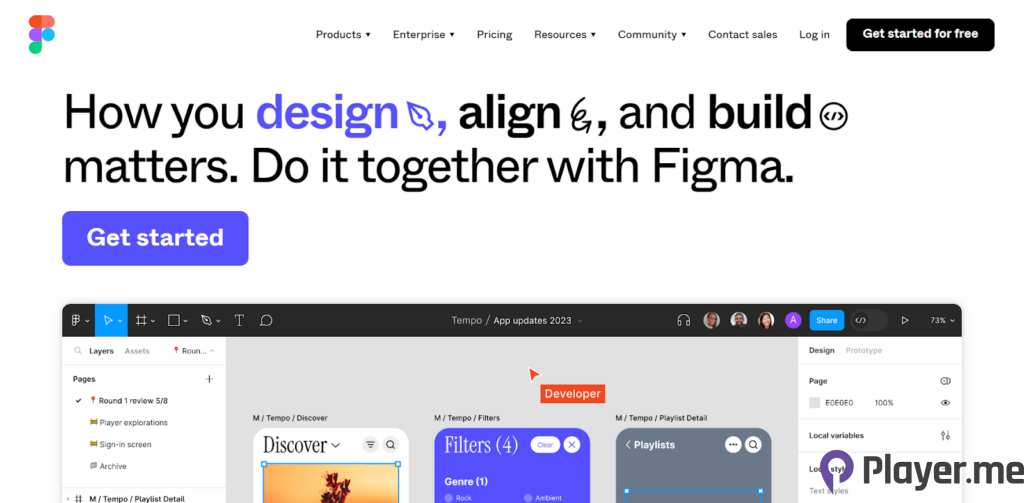In the ever-evolving landscape of the tech industry, mergers and acquisitions often shape the future trajectory of companies. One such high-profile deal that recently took a dramatic turn is Adobe Inc.’s proposed $20 billion merger with Figma Inc. What seemed like a strategic move to reinforce Adobe’s position in the creative software space ended in a surprising fallout.
Background of the Adobe-Figma Deal: A $20 Billion Gamble
Last September, Adobe made headlines with its ambitious plan to acquire Figma Inc. in a massive $20 billion deal. The motivation behind the move was clear – Adobe’s core portfolio of creative software, including iconic tools like Photoshop and Illustrator, was facing competitive pressures from innovative web-based startups like Figma and Canva. These startups were not only gaining traction among younger users but also rapidly expanding their customer bases.

Investors initially raised concerns about Adobe’s growth potential within its existing creative software suite, and the high price tag of the Figma deal fuelled speculation that management was feeling the heat from the competition. The announcement of the deal led to a significant drop in Adobe’s market value.
The Unravelling of the Deal: Regulatory Roadblocks and Termination
As the deal progressed, it faced stringent scrutiny from antitrust regulators in multiple countries. Last weekend, after a challenging discussion with European regulators, Adobe and Figma jointly announced the termination of the proposed merger. The decision came amid regulatory concerns, with no clear path to antitrust approvals in Europe and the UK.
The termination comes with financial repercussions. Adobe, now left with approximately $6 billion in cash, will pay a hefty termination fee of $1 billion to Figma. The failed deal leaves both companies at a crossroads, each with its own set of challenges and opportunities.
Financial Implications: Adobe’s $6 Billion War Chest and Figma’s Independence
With the collapse of the Figma deal, Adobe found itself with a substantial war chest of $6 billion. The company intends to channel this capital towards accelerating its Artificial Intelligence (AI) development initiatives and initiating stock buybacks. The focus on AI is strategic, considering the growing importance of generative AI in the tech industry.
On the other side of the equation, Figma, an independent San Francisco-based startup, stands to continue its growth trajectory. The web-based collaborative platform for designs and brainstorming, used by companies like Uber, Coinbase, and Zoom, has seen its annual recurring revenue grow by 40% to over $600 million. Figma’s success positions it as a potential IPO candidate, highlighting the company’s financial strength and positive cash flow.
Regulatory Challenges: Antitrust Concerns and Regulatory Scrutiny
The Adobe-Figma deal faced intense scrutiny from antitrust regulators, particularly in the UK and Europe. The Competition and Markets Authority (CMA) in the UK expressed concerns about potential harm to innovation in software used by the majority of UK digital designers. Similar concerns were echoed by the European Union, emphasising the potential reduction of competition in the creative software space.
Despite Adobe’s arguments that it does not compete with Figma in a meaningful way, regulators were unconvinced. The UK regulators indicated a need for remedies, including the possibility of Adobe divesting Figma’s design assets. Adobe, refusing to provide fixes, maintained that no remedy could sufficiently address the concerns while preserving the benefits of the deal.
This regulatory deadlock ultimately led to the termination of the deal, showcasing the increasing challenges faced by tech companies in navigating complex regulatory landscapes, especially in high-stakes mergers and acquisitions.
Market Reactions and Investor Sentiment: Balancing Act for Adobe
The termination of the Figma deal had immediate effects on the market. Adobe’s shares rose about 1%, indicating some level of investor relief. However, the long-term implications are contingent on Adobe’s ability to address competitive pressures and capitalise on its AI initiatives.

Investors, initially concerned about the competition posed by web-based startups like Figma and Canva, have witnessed a shift in sentiment. Adobe’s aggressive investment in generative AI, resulting in proprietary models and popular features, has contributed to a 77% gain in stock value in the current year. The strategic focus on AI is seen as a key driver to expand Adobe’s user base, increase revenue per user, and solidify its dominance among creative design professionals.
However, the excitement about AI doesn’t offer the same immediate revenue boost as Figma’s product design app would have. Adobe’s outlook for new creative business in 2024 fell slightly short of estimates, leading to a notable single-day drop in stock value. This underscores the delicate balance Adobe must strike between AI development and addressing the demands of its user base.
The Future Landscape: Adobe’s AI Initiatives and Industry Implications
In the aftermath of the failed Figma deal, Adobe faces the ongoing challenge of staying ahead in a competitive landscape. To strengthen its position, Adobe is likely to intensify its investments in AI features and its online platform, Express, catering to new casual users. Small acquisitions for intellectual property or staff could also be on the horizon.
The long-term threat from startups like Figma and Canva, along with the continuous evolution of generative AI-based creative tools, remains a concern for Adobe. Figma, with its successful product for designing apps and websites, has proven more successful than Adobe’s equivalent, XD. Additionally, Figma’s potential expansion into Adobe’s main creative space, such as photo editing, adds another layer of competition.
Will Adobe be Able to Survive Through Industry Shifts and Future Dynamics?
As Adobe navigates these challenges, the broader tech industry is closely watching the implications of increased regulatory scrutiny. The termination of the Adobe-Figma deal reflects a trend where regulatory hurdles could impact not only big tech but also smaller technology companies, potentially limiting their opportunities and exit premiums.
The fallout of the Adobe-Figma deal marks a pivotal moment in the tech industry. While Adobe faces challenges in addressing competition and satisfying investor expectations, Figma emerges as a resilient independent player with a strong financial standing.
Will Adobe and Figma be able to adapt to the dynamic demands of the creative software market? Bookmark our website so you don’t miss out on any news about it.
Author Profile
Latest entries
 GAMING2024.06.12Top 4 Female Tekken 8 Fighters to Obliterate Your Opponents in Style!
GAMING2024.06.12Top 4 Female Tekken 8 Fighters to Obliterate Your Opponents in Style! NEWS2024.03.18Elon Musk’s SpaceX Ventures into National Security to Empower Spy Satellite Network for U.S.
NEWS2024.03.18Elon Musk’s SpaceX Ventures into National Security to Empower Spy Satellite Network for U.S. GAMING2024.03.17PS Plus: 7 New Games for March and Beyond
GAMING2024.03.17PS Plus: 7 New Games for March and Beyond GAMING2024.03.17Last Epoch Necromancer Builds: All You Need To Know About It
GAMING2024.03.17Last Epoch Necromancer Builds: All You Need To Know About It





